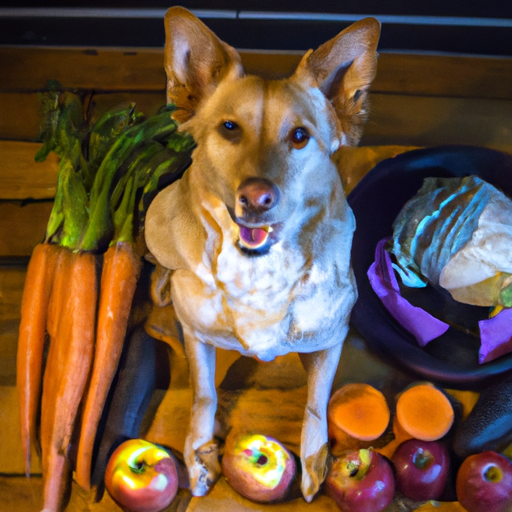The Importance of a Raw Diet for Dogs
As a caregiver, your pup’s wellbeing is undoubtedly your first priority. Adopting a raw food diet for your furry friend can be a game-changer. The raw food diet, often known as the BARF diet (Biologically Appropriate Raw Food), has gained popularity among dog parents due to its numerous health benefits. It can boost your dog’s immune system, improve their skin and coat, and keep their teeth clean and healthy.
What Constitutes a Raw Food Diet for Dogs
A balanced raw food diet for dogs generally consists of:
- 50-75% muscle meat
- 10-30% organ meat
- 10-20% bones
You might be thinking, “That sounds great, but what specific foods can I feed my dog?” Let’s dive into the specifics.
Meat and Protein Sources
Your dog’s main source of protein will come from raw meat. Here are some safe options:
- Chicken (with bones but without skin)
- Beef (ground or cub)
- Turkey (ground or cub)
- Lamb (ground or cub)
- Fish (whole or filleted)
- Rabbit (whole or filleted)
Remember to include organ meats such as liver, kidney, and heart, which are packed with essential nutrients.
Fruits and Vegetables
Yes, your canine companion can enjoy fruits and vegetables too! They provide essential vitamins, minerals, and fiber. Here are some dog-friendly options:
- Apples (without seeds)
- Bananas
- Blueberries
- Carrots
- Sweet potatoes
- Broccoli
Ensure to feed these in moderation and always cut into small, manageable pieces to prevent choking.
Safe and Unsafe Foods: A Quick Reference
| Safe Foods | Unsafe Foods |
|---|---|
| Chicken | Onions |
| Beef | Grapes/Raisins |
| Turkey | Chocolate |
| Lamb | Avocado |
| Fish | Macadamia Nuts |
| Rabbit | Xylitol |
| Apples | Alcohol |
| Bananas | Coffee/Tea |
| Blueberries | Garlic |
| Carrots | Cooked Bones |
| Sweet Potatoes | Dairy Products |
| Broccoli | Raw Eggs |
Keep this table handy, and when in doubt, consult with your vet before introducing a new food into your dog’s diet.
Preparing and Serving Raw Food
Preparing raw food for your dog requires careful handling to prevent bacterial contamination. Always wash your hands before and after handling raw meat. Serve the food in a clean dish and remove any uneaten food promptly to prevent spoiling.
Transition your dog to a raw food diet gradually. Start by mixing a small amount of raw food with their current diet, and gradually increase the raw food portion over several weeks.
FAQ
Q: Can all dogs eat a raw food diet?
A: Most dogs can benefit from a raw food diet. However, some dogs with specific health conditions may not. Always consult your vet before making significant changes to your dog’s diet.
Q: Is it more expensive to feed my dog a raw food diet?
A: It can be, depending on the type of meat and produce you choose. But many dog owners find the potential health benefits worth the extra cost.
Q: Can a raw food diet make my dog aggressive?
A: No, diet does not influence a dog’s behavior. Aggression is typically a result of training, socialization, or underlying health issues.
Q: Can I mix raw food with kibble?
A: Yes, but it’s important to ensure your dog is still getting a balanced diet. Some experts suggest feeding raw food and kibble separately to aid digestion.
Remember, your journey as a caregiver is unique, as is your dog. What works best for one dog might not work for another. Always consult with a trusted veterinarian before making any significant changes to your dog’s diet.



